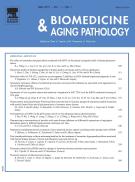Normobaric hyperoxia (HO) preconditioning induces durable and effective neuroprotection against cerebral ischemia and mGluRII expression - 18/09/13

Abstract |
Preconditioning/ischemic tolerance of brain refers to a natural adaptive response induced by sublethal insults to increase brain resistance after stroke. Molecular studies can contribute to clarify precise mechanism(s) of this neuroprotective phenomenon. In this study, we attempted to determine durability of neuroprotection exerted by normobaric hyperoxia (HO) and its effects on mGluRII expression. Rats were divided into five groups (hyperoxia-intact, hyperoxia-MCAO, room air-intact, room air-MCAO and room air-sham). Hyperoxia groups consist of four subgroups (2HO, 5HO, 10HO and 15HO). It means that respectively 2, 5, 10 or 15 days after pretreatment (exposure to 95% inspired O2 for 4h/day and 6 consecutive days) animals were subjected to MCAO surgery (hyperoxia-MCAO group) or that decapitated as intact (hyperoxia-intact). Room air groups were considered as control and exposed to 21% oxygen. MCAO groups after the time specified in each group were subjected to 60minutes of right middle cerebral artery occlusion (MCAO). 24hours after reperfusion, neurologic deficit score (NDS) and brain infarct volume (IV) were evaluated in MCAO-operated groups. Sham operated and intact groups were used to assess expression of mGluR2/3 and glutathione (GSH) levels of core, penumbra and subcortex regions. Preconditioning with HO transiently decreased NDS and IV, and increased expression of mGluR2/3 in core, penumbra, and subcortex. These effects of hyperoxia disappeared gradually during15 days after pretreatment. Although additional studies will be required to further elucidate precise mechanism(s) in ischemic tolerance, it seems that likely part of protective effect of intermittent HO is associated with upregulation of mGluR2/3.
El texto completo de este artículo está disponible en PDF.Keywords : Brain ischemia tolerance, Glutathione levels, Hyperoxia preconditioning, Metabotropic glutamate receptor II, Neuroprotection, Time course
Esquema
Vol 3 - N° 3
P. 137-144 - juillet 2013 Regresar al númeroBienvenido a EM-consulte, la referencia de los profesionales de la salud.
El acceso al texto completo de este artículo requiere una suscripción.
¿Ya suscrito a @@106933@@ revista ?

